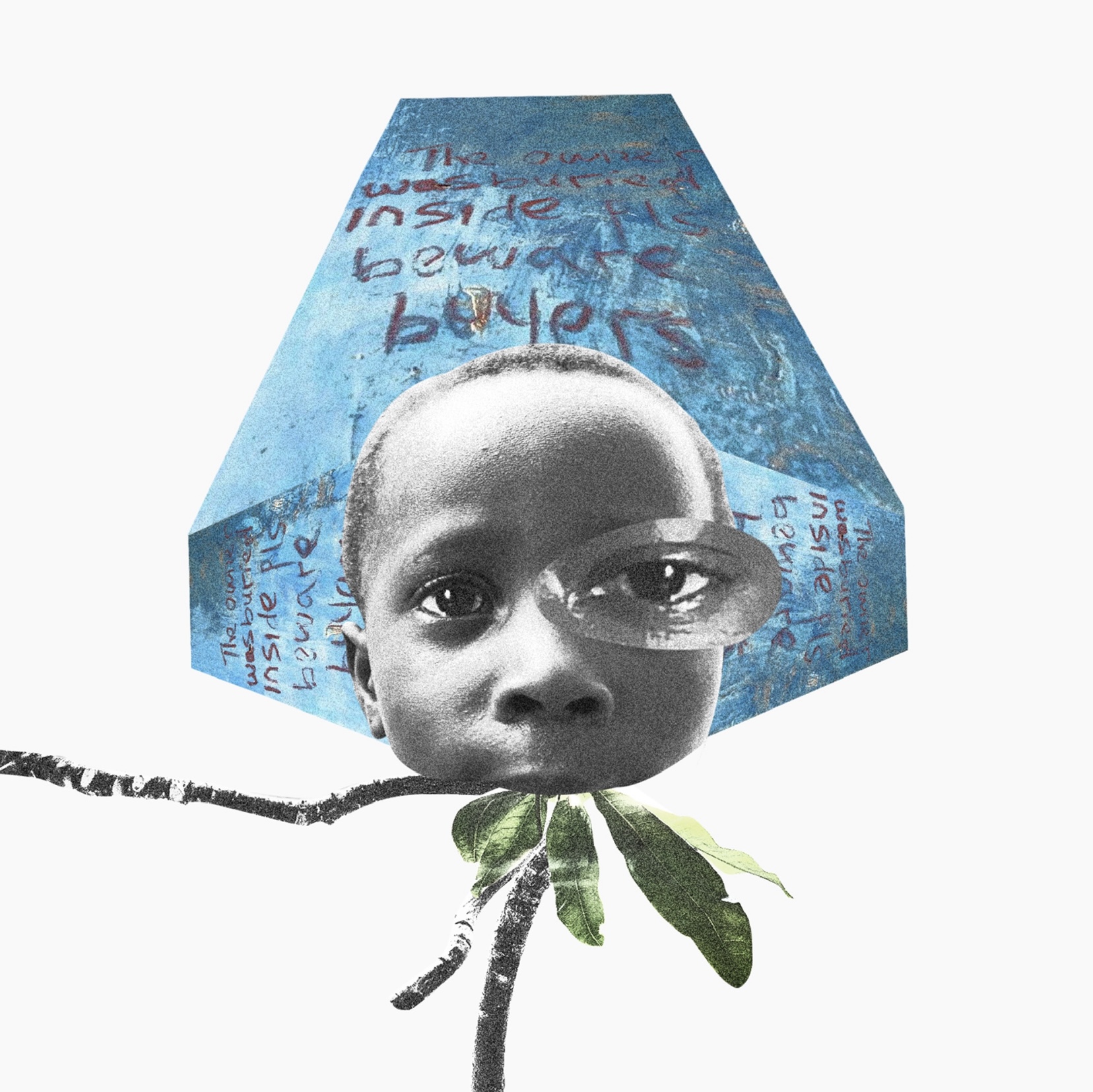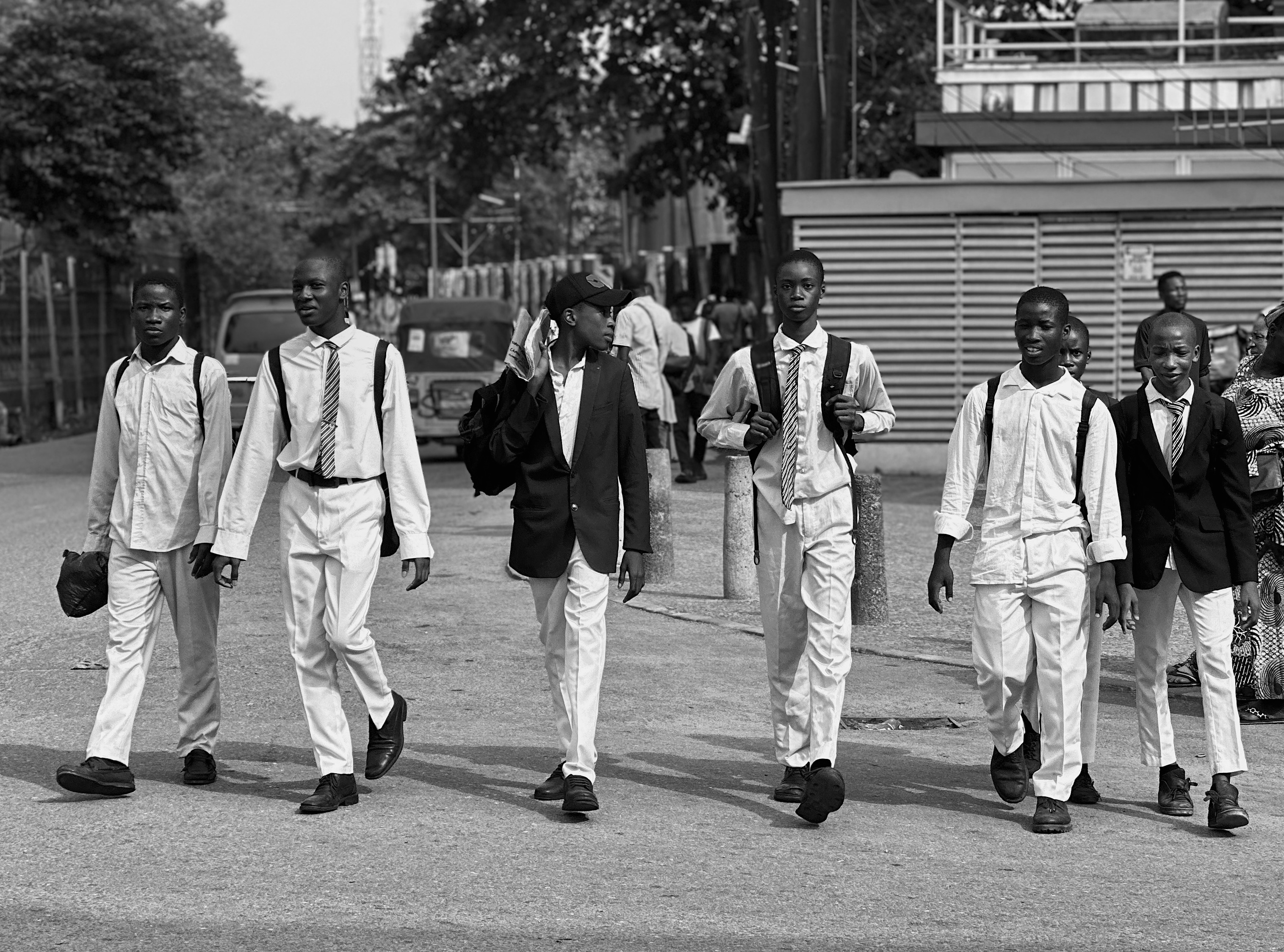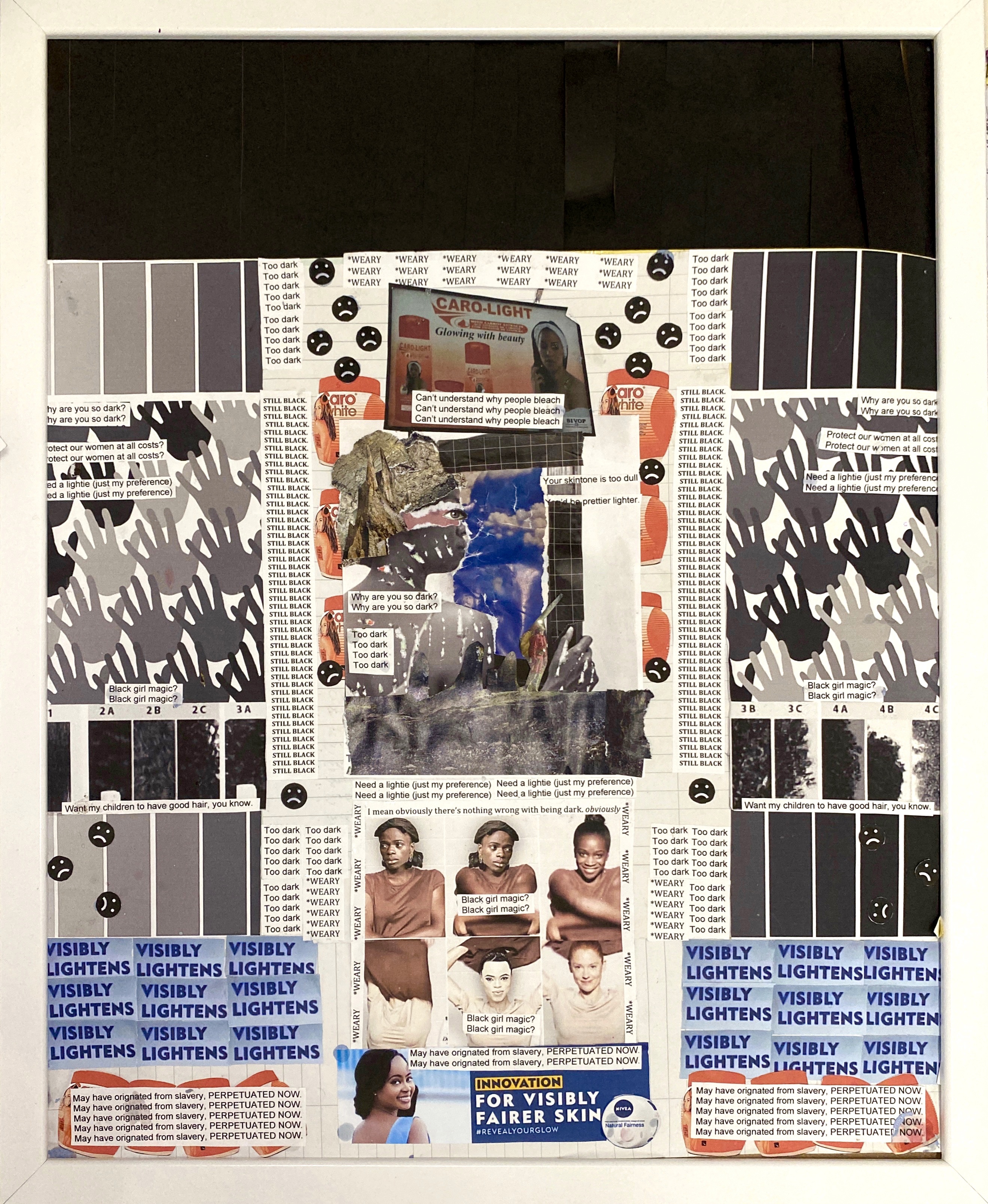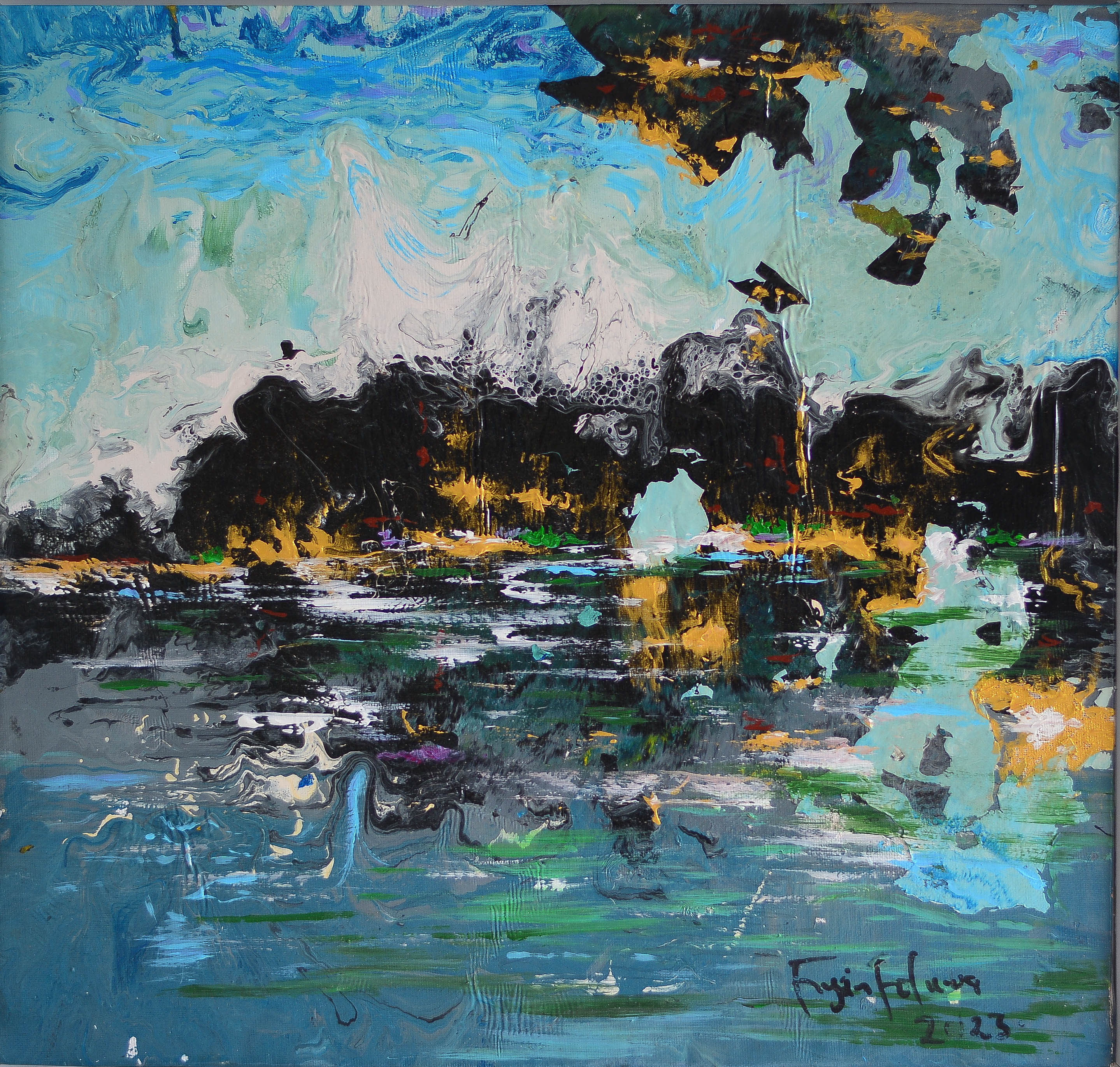This exhibition takes its title from Sefi Atta’s irreverent bildungsroman. Like the novel, the exhibition forages through the world of childhood and adolescence, investigating the contexts of a Nigerian coming-of-age. The show evolved from the curator’s memories of her childhood, and introspection into her identity as an adult, wondering when, how and what marked the transition from one to the other. Thus, Everything Good Will Come explores some of the definitive moments and symbolisms of this metamorphosis. It emphasises self-realisation and the growing sensitivity to one’s individuality and place in the world. Although the exhibition indulges in nostalgia, it stretches beyond themes of childhood innocence to (re)examine the darker, more complex aspects of these formative years. It highlights growing pains, and the internal conflicts of asserting one’s personhood.
The artists in the show unravel the theme in multiple directions, unveiling the manifold experiences of Nigerian childhood. Their explorations consider the subject of family, government, religion, film and more. Yet, despite the diversity of interpretation, the works remain in conversation. For instance, Monjola Adeboye and Caleb O reflect on identity formed through family, while OC George sheds light on the underbelly of familial expectations, altogether creating a kaleidoscope of the complexities of Nigerian households. Meanwhile, the artists from The Children’s Art Gallery, currently entrenched in their coming-of-age stories, draw us into their tumultuous inner world, challenging the notion that children have no worries.
For this exhibit, the medium is also the message. To evoke the spirit of childhood and adolescence, Everything Good Will Come centres its premise on photography and collage. Photography connotes the capturing of time and the nostalgia of our childhood photo albums. Collage provokes the craftiness of childhood—as in mischief, as in messing around with tools—and is symbolic of how many unexpected pieces form a distinct whole.
Everything Good Will Come is a reminder that the child is the father of the man, and an incitement to acknowledge, celebrate and introspect on these years of our lives. It aims to reaffirm the agency of children and teenagers, while bridging the representational gap in Nigerian child/adolescent media, conversations and more. This exhibition is a space for people to (re)connect with the evolutions of the self.
Artwork above: Adedolapo Salako, Crossing Thresholds, 2024, 24 x 35 cm, Photographic print on enhanced matte paper, Edition of 5, R9164.00 ex VA

Fodder questions the notion encapsulated in the Yoruba adage “Ko ma dabi ejo to koja lori apata ti ko nipa” which often sees children as long-term investments expected to yield profit in one way or the other; Fodder highlights how this innocent belief can also lead to dehumanising and harmful outcomes.
FEATURED ARTISTS

ADEYOSOLA ADENIRAN
Adeyosola Adeniran is an art curator based in Lagos. As a curator, she is interested in unveiling personal narratives and tackling the limanilities of the self. Her literary background underscores the lens through which she engages art. She was the curatorial assistant for the 2023 LagosPhoto Festival, and curator for the Table of Hope project in Lagos.

Back from School is a series that captures the moments of children returning home after school hours. It serves as a nostalgic reflection on the carefree nature of adolescence. This collection evokes memories of childhood, reminding us of the freedom we once enjoyed, devoid of responsibilities. Through these images, we journey back to our past, envisioning the innocence of our teenage years and contemplating the freedom that lies ahead in our lives and futures.

Do We Eat the Fruit without Thanking the Tree? exists solely as I do – in a continuous bid to pay homage to and revere my ancestors. In a brief where the focus is childhood, how does one speak of being a child without mention of the mother who birthed them? The photographs used to create this piece are the childhood photos of my mother and her siblings. To me, existence occurs somewhere in between a circle and a spiral. To speak of myself, I must speak of my mother, who must speak of her mother (my grandmother), my great grandmother, and so it goes on to the first matriarch. This piece, like all my work, highlights themes of Rememory (the process of returning to memories again and again, in such a way that they affect a person's processing of their present), rebirth and reincarnation.

Colourism (Still Black) is an exploration of the cultural hypocrisy, secrecy and nuance of colourism as a dark skinned girl growing up in Nigeria. What do you do when you are taught to hate your skin by people who look like you? Colourism is an identity crisis that this piece investigates.

Growing up I loved our month-long visits to my maternal grandparent’s house in Port Harcourt. We didn’t call it a family reunion but the six children and twenty-plus grandchildren that sprouted from this family tree lived together, ate together, fell asleep together, and played together, dancing in bellied laughter out in the compound till sundown. When I look at these photographs, I remember the taste of childlike wonder, the sweetness, the made-up games and stories we exchanged. The sounds of our feet running on dusty roads and the warmth of hugs and hands held. This joy, even when pain was around the corner, kept me afloat. These days I find ways to play, in solitude and among friends that feel like family, especially when things feel hard. As I satiate the needs of my younger self, tend to her desires, and preserve her spirit, I continue to heal.
ASSOCIATED GALLERY
The first of its kind in the world, The Children’s Art Gallery solely represents talented child artists from 4 to 17 years of age. Our focus is spotlighting fine contemporary pieces by artists within this age range, and highlighting each child’s creative process and artistic achievements. The gallery prioritizes inclusive opportunities for children, with 70% of the gallery’s artists coming from underprivileged backgrounds.
Children from all walks of life are considered at TCAG. We believe their amazing artistic talent and interest should be encouraged, and used to help children attain a better quality of livelihood with a caring, holistic approach.
Proceeds from artwork sales at The Children’s Art Gallery go towards bettering each specific artist’s access to healthcare, education, and creative development. We harness storytelling and innovative technology to share about our member artists, and the important role that engaging with art plays in their lives.
Founded and headquartered in Lagos, Nigeria, TCAG has expanded its social impact, outreach and art distribution internationally, with additional exhibition and art programs running in Ghana and Zimbabwe.


NIGERIAN BIDULGSROMAN
A selection of literary texts by Nigerian authors exploring the coming-of-age theme

Freshwater
Akwaeke Emezi

Everything Good Will Come
Sefi Atta

Americanah
Chimamanda Ngozi Adichie

Purple Hibiscus
Chimamanda Ngozi Adichie

The Years Of Childhood
Wole Soyinka Ake

Born On A Tuesday
Elnathan John
Further Reading In Articles
African Artist Directory

































